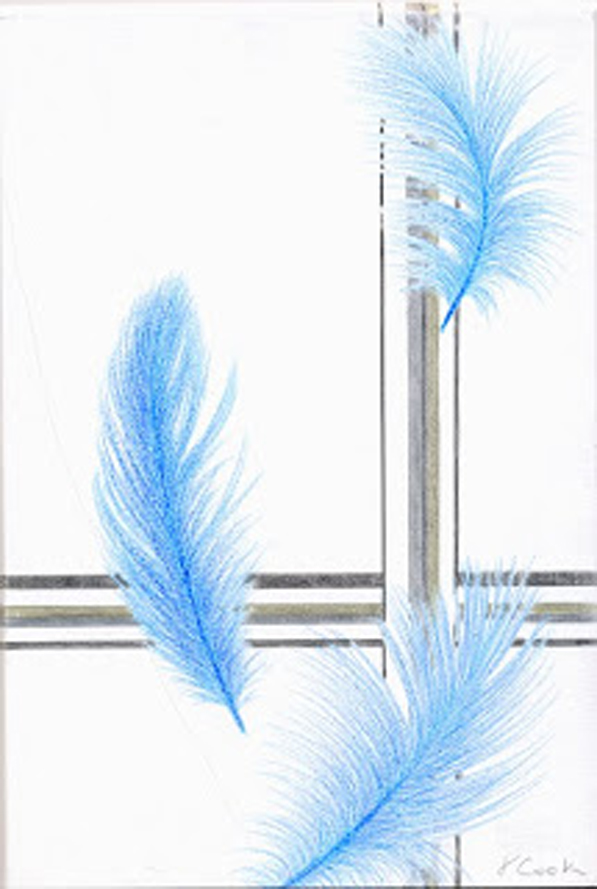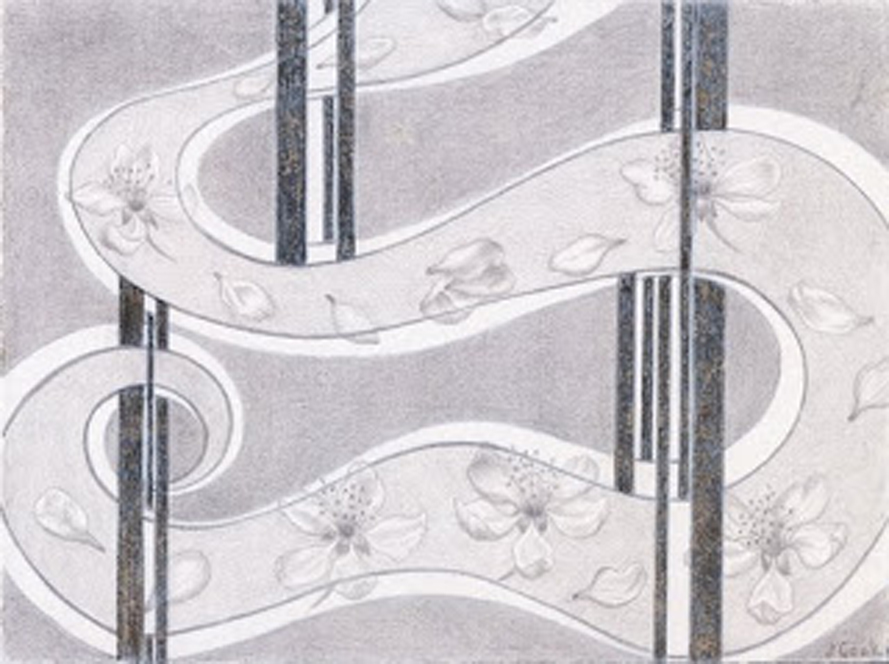I have drawing on Stonehenge paper, which I find so responsive, and the white of the paper came again to the fore. It is fascinating how the white of the surface on which one is painting or drawing suddenly takes on its own life and begins to dictate.
Initially there can be the white paper fright - rare, I have to admit, but it happens. This is when one is totally intimidated by that pristine white surface facing one on the drawing board. It is so pure, so virgin, so unsullied. Where on earth does one start? And CAN one even start sensibly? But then that stage passes, usually pretty quickly because one is already all involved with the project already and anxious to move ahead.
The Three Feathers, metalpoint/watercolour, Jeannine Cook artist
Once into the work, the decisions as to where to leave the white of the surface, or even if to do so, become more interesting. And the paper itself begins to talk and dictate. White is a powerful colour; it is not just the negative part where one has not put colour. It can hold its own against all comers, and can even dominate too much unless care is taken. And, of course, it does not have to be pure white - I draw on cream papers where the same situation pertains. Since, ideally, I try to adhere to the concept of "less is more", that plays hugely into the role that white can play, particularly in a drawing. It is all a balancing act, where a sense of composition becomes important. And of course, it becomes fun and interesting, because you never know if you or the white of the paper is going to "win".
I think every artist should cultivate their own personal relationship with that powerful player, Lady White, because it can lead to endlessly rewarding dialogues and good art.











